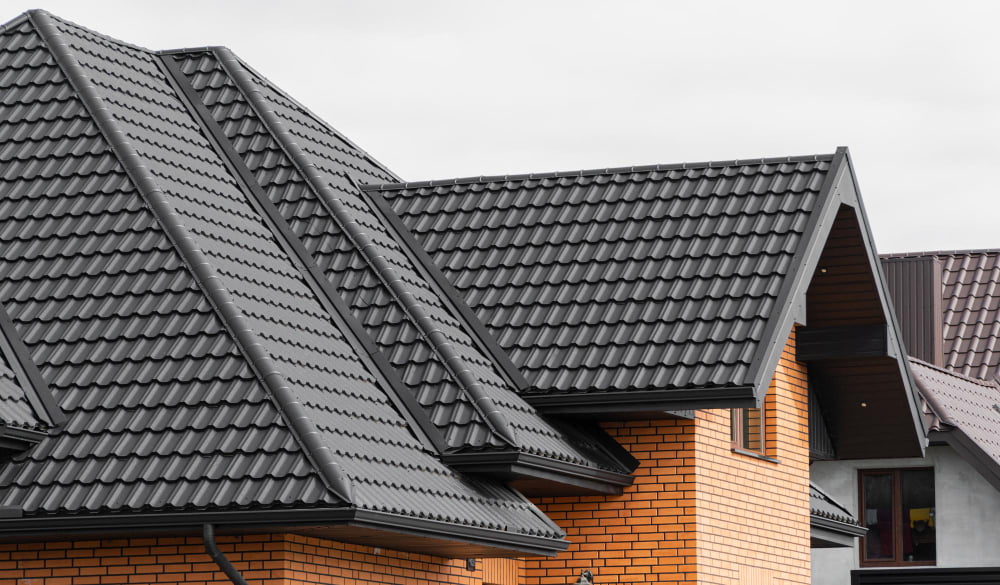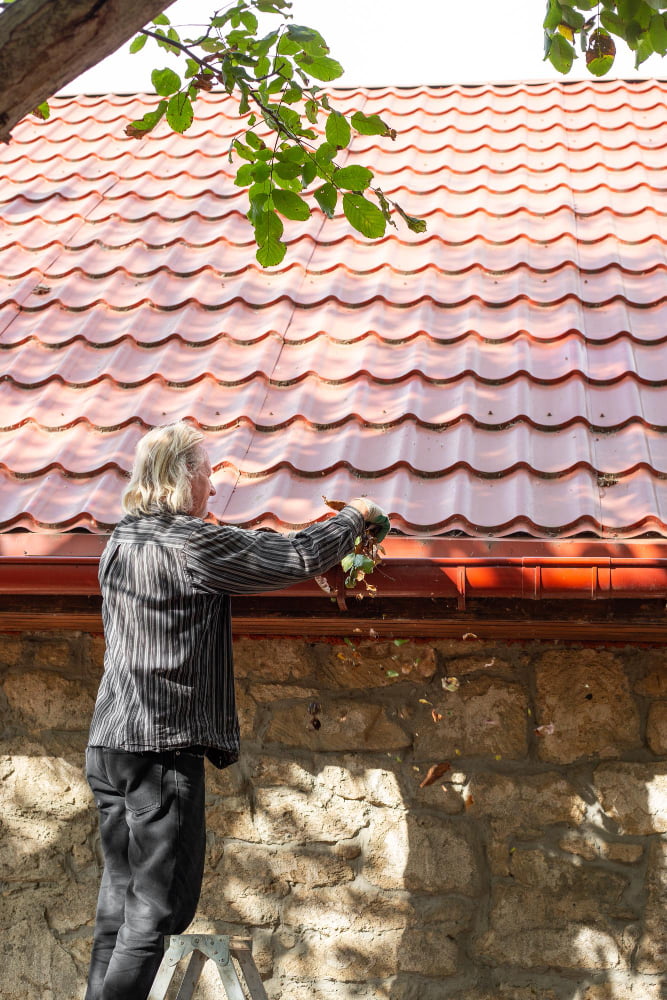Last updated on
A roof stands as a silent sentinel, shielding our homes from the capricious whims of nature, from the relentless sun to the torrential rain and biting cold. Beyond being a mere shelter, it is an integral component that ensures the safety, comfort, and longevity of our homes.
The importance of a well-maintained roof extends far beyond its functional attributes; it also plays a pivotal role in the overall aesthetics and market value of our properties. As homeowners, it is incumbent upon us to grasp the essentials of roofing, delving into the intricate details that govern its performance, durability, and resilience.
Picture this: a home with a roof that seamlessly blends with its architectural design, providing not just protection but also enhancing curb appeal. Now contrast that with a roof that, due to neglect or poor choices, has succumbed to the wear and tear of time, manifesting in leaks, water damage, and diminished structural integrity.
In this comprehensive guide, we embark on a journey through the intricate world of roofing, demystifying its nuances for homeowners to make informed decisions.
Choosing the Right Roofing Material

Selecting the appropriate roofing material is a pivotal decision that impacts the longevity and performance of your roof. There are various options available, each with its unique characteristics. Asphalt shingles, for example, are a popular and cost-effective choice, while metal roofing offers durability and energy efficiency.
Tile and slate roofs, on the other hand, provide a classic and aesthetically pleasing option. Understanding the pros and cons of each material is essential to make an informed decision that aligns with your budget, climate, and aesthetic preferences.
The Importance of Professional Installation
While choosing the right roofing material is crucial, the quality of installation is equally important. Professional installation ensures that the roofing system is properly fitted, minimizing the risk of leaks, water damage, and other issues.
Certified roofing contractors such as a reliable roofing contractor in Monroe for example have the expertise and experience to handle the complexities of installation, including proper ventilation and insulation. DIY installations may seem tempting for cost-saving purposes, but improper installation can lead to costly repairs and compromise the overall functionality of your roof.
Regular Roof Maintenance

Regular maintenance is key to extending the lifespan of your roof and preventing potential problems. Inspecting your roof at least twice a year allows you to identify and address issues such as loose or damaged shingles, clogged gutters, and deteriorating flashing.
Cleaning debris from the roof surface and gutters prevents water buildup and reduces the risk of water damage. Additionally, trimming overhanging branches can minimize the risk of damage from falling limbs during storms. By incorporating these simple maintenance practices, you can significantly enhance the durability and performance of your roof.
Signs of Roof Damage
Being vigilant about signs of roof damage is essential to addressing issues promptly and preventing extensive damage. Water stains on ceilings, peeling paint, and mold growth can be indicative of a leaky roof. Damaged or missing shingles, sagging areas, and visible cracks are also red flags that warrant immediate attention.
Regularly inspecting your attic for signs of moisture, such as damp insulation or rotting wood, can help you detect issues before they escalate. Addressing these problems in their early stages can save you money and protect the structural integrity of your home.
Roof Replacement Considerations
As roofs age, the need for replacement becomes inevitable. Factors such as the material’s lifespan, climate conditions, and the extent of damage determine when replacement is necessary.
When considering a roof replacement, it’s essential to explore the available options and choose a material that aligns with your long-term goals. Additionally, obtaining multiple quotes from reputable contractors allows you to make an informed decision based on both cost and quality.
Energy-efficient Roofing Solutions
In an era of increasing environmental awareness, homeowners are turning to energy-efficient roofing solutions to reduce their carbon footprint and energy bills. Cool roofs, made from reflective materials that absorb less heat, help regulate indoor temperatures, lowering the need for air conditioning.
Solar roofing, equipped with photovoltaic cells, allows homeowners to harness solar energy and generate electricity. Understanding the benefits of these energy-efficient options empowers homeowners to make environmentally conscious choices that contribute to sustainability.
The importance of roofing in maintaining a safe and comfortable home cannot be overstated. This comprehensive guide has explored various aspects of roofing essentials, from choosing the right materials and professional installation to regular maintenance, signs of damage, replacement considerations, and energy-efficient solutions.
By being proactive in understanding and addressing these essential aspects, homeowners can ensure the longevity and performance of their roofs, providing lasting protection for their homes and peace of mind for years to come.
Recap:



